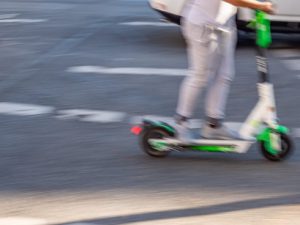On 29 January 2022, a number of changes were introduced to the Highway Code. These changes are expected to have a significant impact on driving habits, and future road traffic accident claims. Motorists who ignore these changes do so at their peril as they could constitute dangerous driving in the event of an accident. It is imperative that you make yourself aware of the changes as there could be potentially fatal consequences.
Hierarchy of road users
Until now there was no such thing as a hierarchy of road users but this has changed. Under the new legislation, those most at risk of collision/injury are at the top of the hierarchy tree. Consequently, they have the highest level of protection and rights on roads and paths. The greatest responsibility to take care of the roads now falls with:-
- Large goods vehicles
- Passenger vehicles
- Vans
- Minibuses
- Cars
- Taxis
- Motorcycles
Subsequently, the greatest level of protection is now given to the following parties (in no particular order):-
- Pedestrians
- Cyclists
- Horse riders
- Motorcyclists
- Children
- Older adults
- Disabled people
The first thing to say is that these new regulations do not detract from the responsibilities of all road users and pedestrians. We all have an obligation to act in a responsible and safe manner, taking into account those around us. However, there is now a legal obligation on individuals to consider whether others may have impaired sight, hearing or mobility issues and take these into account. Quite how this broad spectrum of changes will be enforced remains to be seen.
Junctions, pedestrian crossings and parallel crossings
One of the main changes under the new legislation revolves around the way in which pedestrians are treated when crossing the road. Drivers, motorcyclists, horse-drawn vehicles, horse riders and cyclists are now obliged to:-
- Give way to pedestrians crossing or waiting to cross at a junction they are turning into or out of
Therefore, if a pedestrian suffered an injury in an accident while waiting/crossing the road then it is highly likely you will be held liable in the future. Obviously, there may be mitigating circumstances in the way in which the pedestrians acted but you will need to prove your innocence.
It is also important to recognise the historic regulations with regard to giving way to pedestrians:-
- Pedestrians will always have priority on a zebra crossing, parallel crossing or light controlled crossing (when the signal is green)
- Motorists must give way to pedestrians and cyclists waiting to cross a zebra crossing and parallel crossing
- Horse riders are obliged to give way to pedestrians at a zebra crossing and to pedestrians and cyclists on a parallel crossing
- Cyclists are obliged to give way to pedestrians on a shared use cycle track and to horse riders on bridleways
- Only pedestrians are allowed to use the pavement (this includes those with mobility scooters and wheelchairs)
- Unless specifically instructed otherwise, pedestrians may use any part of the road, cycle tracks and pavement
Reading through the previous and the new regulations, it is not difficult to see who has the hierarchical powers!
Rules for drivers and motorcyclists
Even though many drivers and motorcyclists already felt under pressure, the new regulations have given them even more to think about. They should not:-
- Cut across cyclists, horse riders or horse-drawn vehicles ahead, when turning into or out of a junction or changing direction/lane
- Turn at a junction if this would cause a cyclist, horse rider or horse-drawn vehicle ahead to stop or swerve
Drivers are obliged to wait for a safe gap in the flow of cyclists if necessary when facing the following scenarios:-
- Cyclists approaching, passing or moving off from a junction
- Cyclists moving past or alongside stationary vehicles/slow-moving traffic
- Cyclists travelling around a roundabout
It will be interesting to see how these new changes bed down and what impact they have on personal injury claims.
New guidance on roundabouts
One of the main changes in relation to roundabouts is the fact that people cycling, riding a horse or driving horse-drawn vehicles do not have to pull into the inside lane to go around the roundabout. They are legally within their rights to stay in the left-hand lane which will confuse some motorists. Other guidance for those driving or riding a motorcycle include:-
- Do not attempt to overtake people cycling within that individual’s lane
- Allow those cycling to move across their path as they navigate the roundabout
We have already seen images, reports and videos of cyclists making full use of the legal right to move from side to side within lanes, and cross lanes. To say this will take some getting used to for motorists is an understatement!
Road position for cyclists
As the government continues to push cycling as an enjoyable form of exercise, the raft of new Highway Code regulations are extremely supportive of cyclists. The updated guidance on positioning in the road when cycling includes:-
- Option to ride in the centre of their lane on quiet roads, in slow-moving traffic and as they approach junctions or the road narrows
- Maintaining a distance of at least 0.5 m from the curb edge and further if safe to do so
- Refrain from pulling into the side of the road when there are fast-moving vehicles around
There is specific guidance for those cycling in groups that have for many years, it’s fair to say, been a bugbear to many motorists in the UK. Those cycling in groups should:-
- Be considerate of other road users around them
- Consider riding two abreast when it is safe to do so, particularly in larger groups when accompanying children/less experienced riders
The recent press release has also reiterated the fact that when navigating past parked vehicles, cyclists should:-
- Maintain sufficient room, at least 1 m, to avoid contact if a car door was opened
- Remain vigilant of those walking out from behind parked cars
No doubt we will have some feedback in the months to come although much thought has gone into the new regulations/guidance, so changes are unlikely at this stage.
Overtaking when driving/cycling
There is specific guidance when looking to overtake “vulnerable road users” when driving or cycling. In this instance, vulnerable road users could be cyclists, horse riders or horse-drawn vehicles. As of 29 January, you should:-
- Leave at least 1.5 m when overtaking cyclists at up to 30 miles an hour, with more space for higher speeds
- Leave at least 2 m of space when passing those riding horses or using horse-drawn vehicles – you can only pass at a maximum of 10 mph
- Leave at least 2 m when passing people on the side of the road and keep to a relatively low speed
Many people were surprised to learn that cyclists are now allowed to pass slow-moving/stationary traffic on the left or right. This may cause problems for motorists that are unsighted. However, cyclists are advised to approach with caution when:-
- Approaching junctions
- Considering whether to pass lorries/large vehicles
You will notice there is a common thread when it comes to the new guidance/regulations regarding cyclists. Yes, they have additional rights but they must also use their own common sense. If it is unsafe to pull out into the middle of the road, don’t do it!
What do the new regulations and guidance mean for road users and pedestrians?
The vast majority of motorists in the UK will be surprised by some of these changes but they will need to adapt, and quickly. For example, the concept of moving into the inside lane on a roundabout if you go past “12 o’clock” is no more for cyclists, horse riders or those with horse-drawn vehicles. However, it is important to understand that this does not take away the obligation for cyclists, horse riders and those with horse-drawn vehicles to be sensible on their manoeuvres.
Has proof of negligence shifted?
No. While there are a number of new guidelines and regulations stipulating lane positions and takeover distances, etc the need to prove negligence has not shifted. Videos showing cyclists veering from side to side in their lane, in front of fast-moving vehicles, don’t help the situation. It would appear, with so much mention of cyclists, that the update to the Highway Code is more focused on creating a sustainable long-term relationship between cyclists and other motorists.
Unsure about a road traffic accident you were involved in?
It is imperative that those who believe they have been injured as a consequence of negligence by another road user/pedestrian still come forward with their claims. A personal injury solicitor will discuss the situation with you in more detail, give advice where appropriate and advise you accordingly.
Will we see more cycling accident claims? Will horse riders appreciate their new protections and the ability to pursue personal injury compensation for injuries received?
Living under the new Highway Code
If you take a step back and look at the changes from a distance, many of them appear sensible and in many cases overdue. The added protection for cyclists and horse riders, for example, is something that should probably have been looked at many years ago. The headlines suggest a serious focus on safety and better use of space. However, there is a growing understanding that every motorist, motorcyclist and pedestrian has various legal obligations they need to fulfil.
There may be further regulatory changes down the line because just recently there was also a monumental change in the “Ogden rate”. This is the rate of interest that is used when calculating personal injury compensation liabilities going forward. The current UK government is not scared to ruffle a few feathers when it comes to traditional and long-term regulations/guidance.



